Stave One. Hoyle’s Ghost
No matter how many tabletop games I play, I doubt any game component will ever hit my table in life as much as a standard deck of cards. Solitaire has been a lifetime hobby. I once had a years-long game of Rummy with a friend in which the score reached into the tens of thousands. Poker and Blackjack were once common weekend haunts. Euchre was the obsessive mainstay of my college years. Egyptian Ratscrew rises to the surface every now and again.
Of all the games I’ve learned from Mr. Edmond Hoyle, though, the first classic I taught my children was Hearts. For me, it is the quintessential trick-taking trump game. (My humble apologies to the Spades crowd). I believe Euchre has more to offer, but as a team game that requires four players, it lacks the accessibility of Hearts.
My favorite aspect of Hearts is the mental and emotional tug-of-war in deciding whether I am trying to take all of the tricks, none of the tricks, or perhaps a single defensive trick. I love the thrill of looking over the cards and visualizing that shot for the moon or planning an early short-suit that will open an avenue of control. And, of course, there is the agony of being dealt the Queen of Spades without a single other member of her family, all but guaranteeing trouble.
My love of Hearts, coupled with a love of Charles Dickens that would require a second introduction, sparked what might have been my fastest trigger ever on a Kickstarter project. The Ghosts of Christmas throws a quantum wrinkle into this classic game and adds a side of Ebenezer Scrooge to form an absolute delight on the table.
Ghosts of Christmas is the design of Taiki Shinzawa (Maskmen)—a reimplementation of his 2019 release called Time Palatrix. This reimagined version comes from BoardGameTables.com (Bites, On Tour, QE) and is illustrated by Maria Surducan (Zestrea).
Taking place in the world of A Christmas Carol, Ghosts invites players to consider three tricks simultaneously—Past, Present, and Future—before resolving the shifting timeline to determine a winner.
Stave Two. The First of Three Considerations
Ghosts of Christmas features a deck of 48 cards broken into four suits—Candles, Musical Notes, Hearts, and Scales. I’ve pondered these design choices more than I ought. Breaking anything into fours is challenging in a story with five staves and three ghosts, but that won’t stop me from trying.

Though candles feature prominently in the encounter with Marley, I think they belong to Christmas Past and the many candle-lit memories of Scrooge’s youth. Though there is music in Fezziwig’s party fit to lift any soul, I believe the notes belong to Christmas Present, and Scrooge’s encounter of the many songs of old he hears. The scales most clearly belong to Christmas Yet to Come and the prospect of justice for Ebenezer’s callous ways. The heart, then, would be the repentant and joyful end.
Does it matter? Not really, but that has never stopped my brain before.
Each of the numbers holds a character from the classic tale. With only a dozen slots, I was stunned by some of the character choices—the portly gentleman, for example. However, I think it’s great to see the obscure faces rise to join the beloved household names.
Stave Three. The Second of Three Considerations
There are two variations in the game. I’ll start by explaining the simpler Tiny Tim variant.
After making adjustments for the human count, players are dealt twelve cards each. The game will feature one hand for every player, and each hand will consist of four rounds. On a turn, players choose one card and play it face-up into either their Past, Present, or Future slot. The first player to open each time slot will set the dial for that slot to the suit played. If possible, players must follow suit in each slot, though they may play the slots in any order.
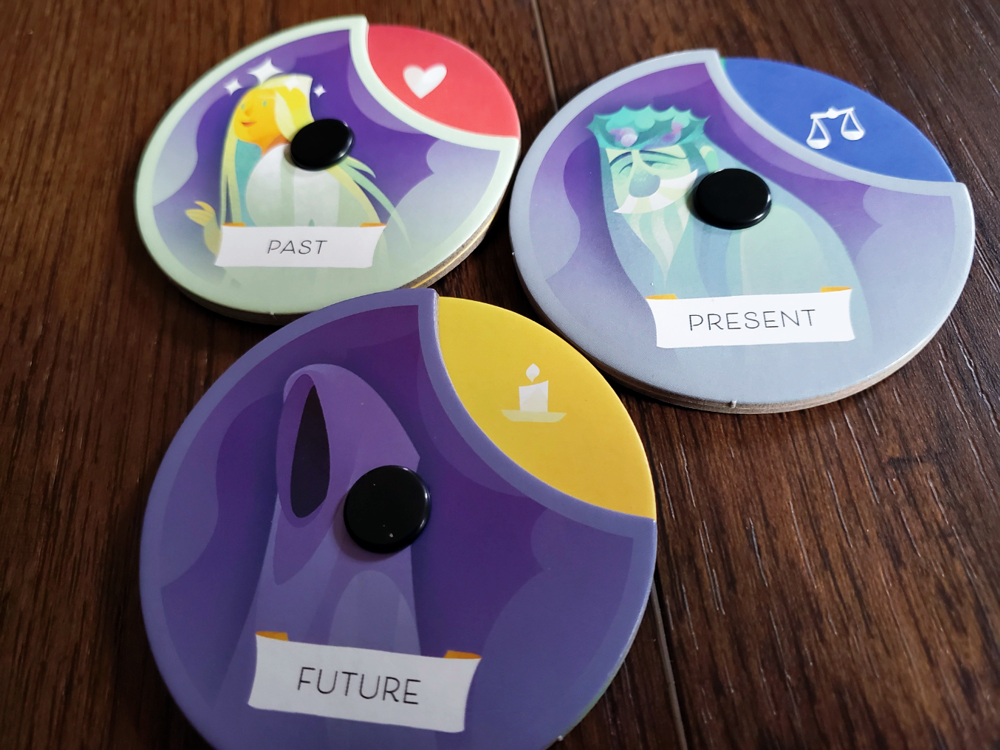
Hearts serve as a trump suit, though without the rigamarole of “breaking hearts” according to Hoyle. Hearts may be played as the lead as well as any time the lead suit is lacking.
Once three cards have been played, the Past trick is resolved according to the suit on the dial. If Candles own the lead, for example, the highest Candle takes the trick, or the highest Heart if one or more are played.
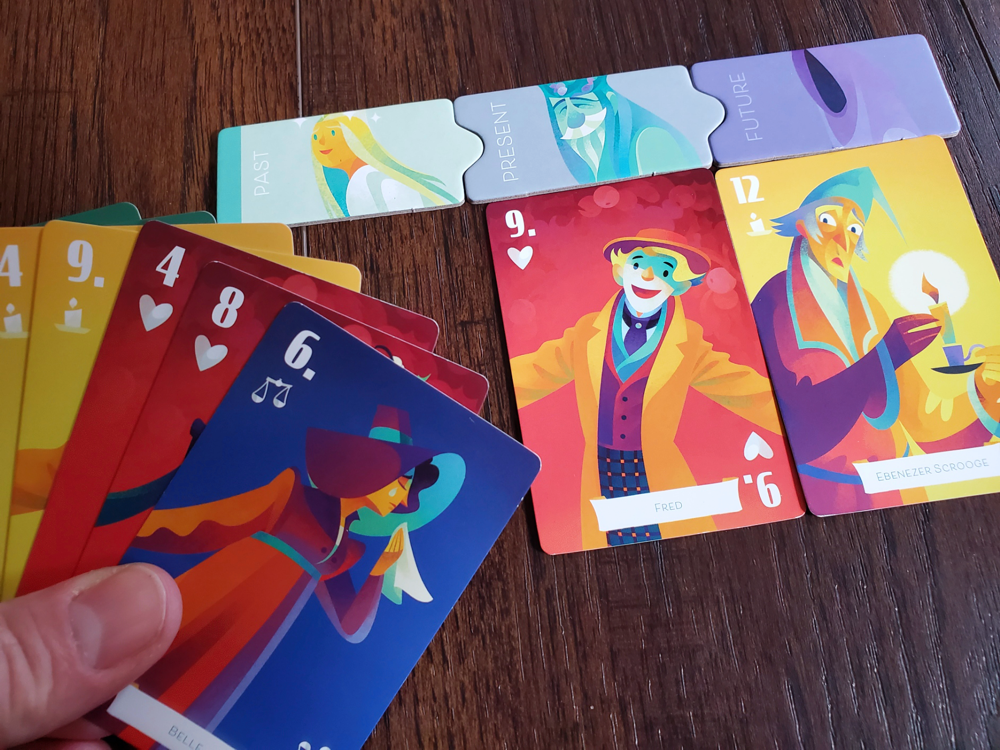
Then follows the quantum twist. The remainder of the dials are ignored and the lead suit is determined by the player who won the previous trick. So the Present lead will belong to the player who took the Past, regardless of what was on the dial. This means that someone who snuck a high card or a Heart in at the last minute can effectively “change the Past” and alter the Present, and so on into the Future. For each trick won, players claim a wreath as they discard their plays.
The hand then continues with another round, utilizing the remaining cards in hand. Each successive round ratchets up the tension as choice is limited and impending fate is revealed. After the final cards are played, the hand is scored on the provided board before dealing once again.
In the Tiny Tim variant, the scoring is simple. In the four-player game, players who take zero tricks receive six points. Players who take six or more tricks receive zero points. In between, players take points equal to the number of tricks taken.
Stave Four. The Last of the Considerations
Once the Tiny Tim variant becomes second nature, there are two ways to bump up the complexity around these Ghosts.
The game’s intended design involves bidding a number of tricks at the outset of each hand. Players attempt to accurately predict the exact number of tricks after previewing their hands, claiming one Purple Door token for each estimated trick. Red doors are also available, which may be selected to provide wiggle room in the bid.
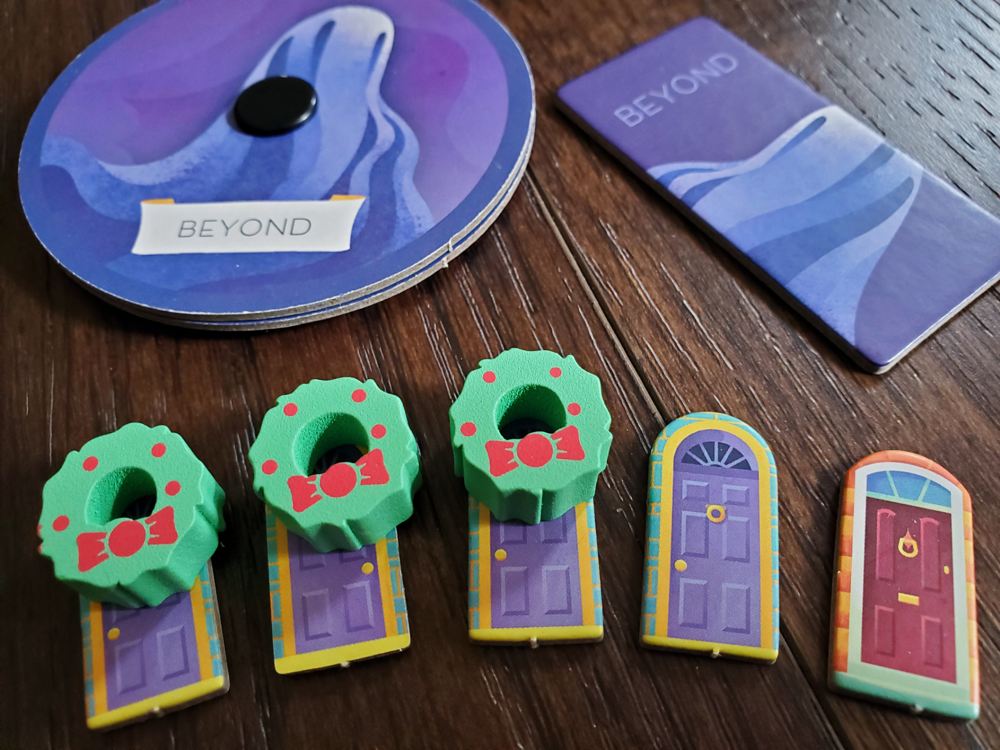
At the round’s end, players score based on their predictions. If a player took only Purple Doors, they must cover each Purple Door token with a wreath—no more, no less—in order to score two points each. Otherwise, no points are awarded. If a Red Door was taken, the Red Door may also be covered, but the score will only net one point each.
No bones about it, this base game is brutal and nerve-racking. No wonder they say to start with Tiny Tim! The little fella is far less menacing.
The second variant is called Beyond. A fourth time slot—Beyond—is added to the chain with the Past, Present, and Future. Instead of playing four rounds with three tricks each, the Beyond variant plays with three rounds of four tricks each. The implications are clear in the quantum realm. There are ample opportunities here to steal away the lead and alter every hand.
Stave Five. The End of It
This is the best trick-taking game I’ve played that didn’t start with a standard deck of Bicycle cards. And yes, I’ve played The Crew.
There are reasons not to enjoy Ghosts of Christmas, some with more merit than others, but none that change my mind. There is a limitation on the player count, with the rules only accommodating three or four humans. However, if you’ve played trick-taking games, you know that there are ideal counts at the table, and I’m perfectly OK with Taiki Shinzawa and BoardGameTables.com owning those ideals.
The timeline alterations in the middle of each hand can be disorienting at first. That confusion melts away after the first round or two, though, opening a door to tactical considerations that are simply delicious. Stealing control of the Future because of an artfully played Present is ridiculously enjoyable. Playing one time slot early in the round to short-suit your hand for another time slot at the end of the round is likewise gratifying. There are so many ways to tinker with time in this tiny box. I love it!
I would change only one piece of the design in terms of components. I wish they had chosen door knockers instead of wreaths as the trick markers. The only wreaths in the Dickens story are a wreath of holly around the head of the Ghost of Christmas Present and the wreath of sausage piled at his feet. A game of chasing—and sometimes avoiding—door knockers would have brought the crucial Marley visit to life and fed the story so fittingly. Plus, the faux-brass pieces would have all but removed the feeling that this is a holiday-only game, which it so clearly is not. The knockers are featured on the card backs, but I would rather see them on the table.
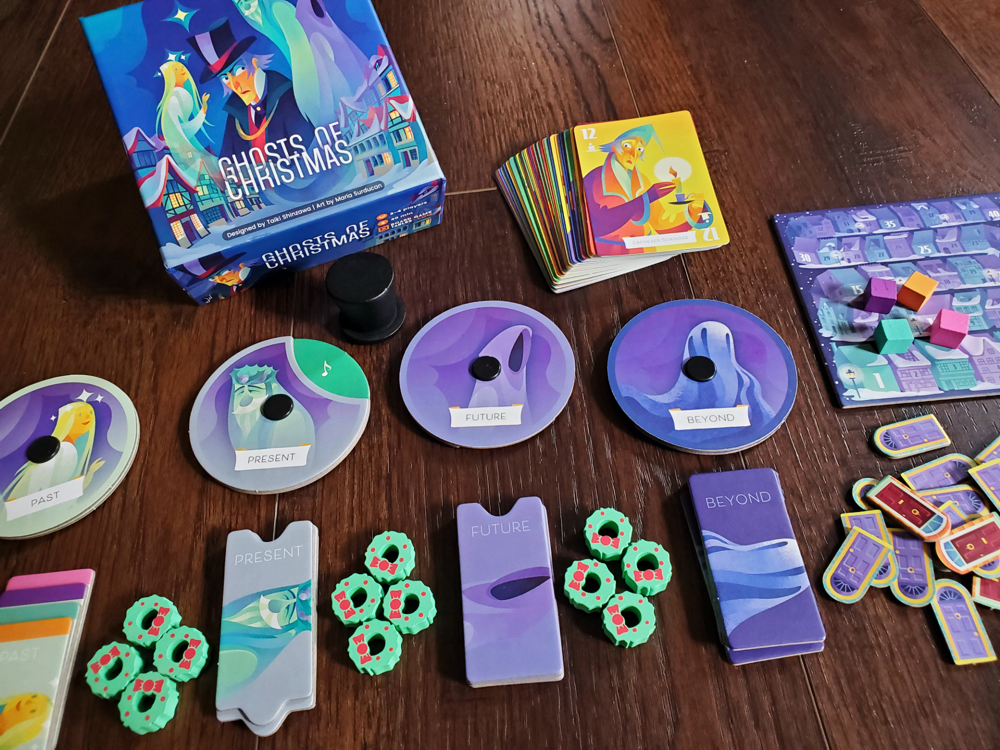
So far, I’ve most enjoyed the Tiny Tim variant, but I believe that is because I’ve played with the family. The kiddos can think far enough in advance to have those magical trick scoring numbers in their heads. The bidding mechanism is slightly punishing and requires a good bit of forethought—and a willingness to bust. The Beyond variant is great, but we like the non-stop push and pull of four rounds per hand rather than just three. Others may see it differently, but I love that there are choices!
Ghosts of Christmas packs a lovely amount of play into a box more tiny than Tim. The artwork is so much fun and fits the components beautifully. The game is only a slight twist on a card classic, which gives it a familiar feel; but that twist adds so much thoughtfulness to the game that it becomes another goose altogether.
Ghosts wears the storied theme of A Christmas Carol very well. Dropping the various characters into the different time periods feels natural. Hearing my daughter say, “play your other Fred!” is just plain fun, even if she is telling everyone at the table that I have another nine. The realization that changing the timeline in any way changes future potential in every way is spot on. Allowing the Hearts to rule is the ultimate nod to Mr. Dickens.
It may sound like I’m gushing. That’s because I am. These Ghosts cannot replace a Bicycle deck, but they are sure to see the table the whole year through.


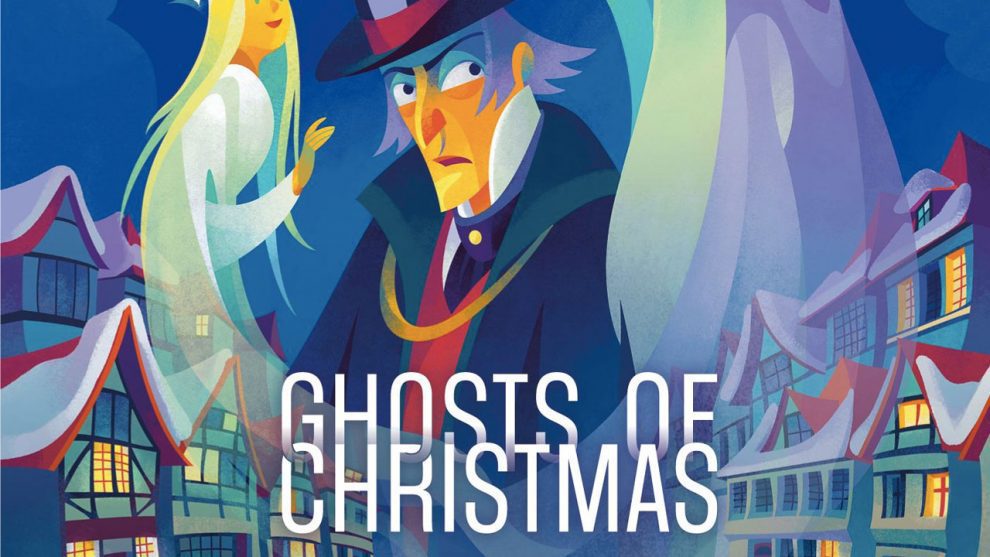




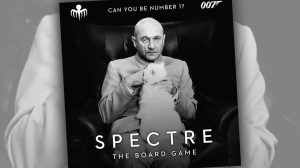




Add Comment